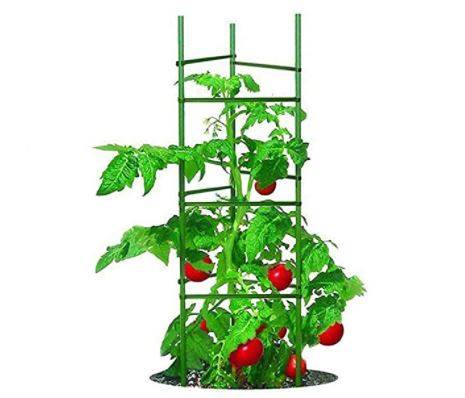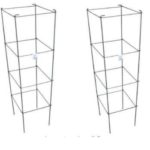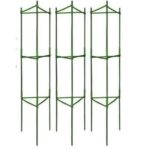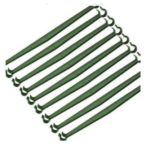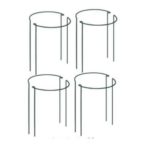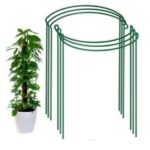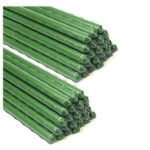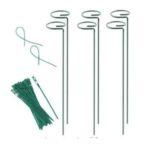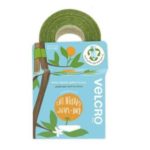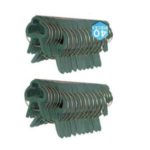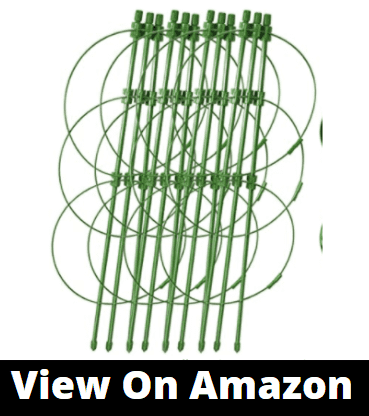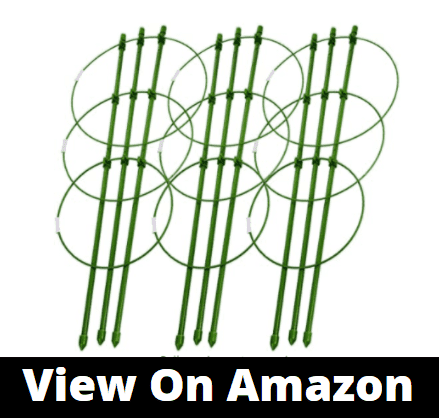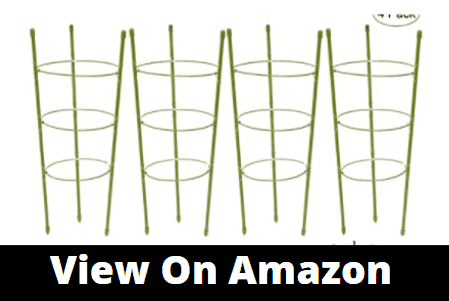Steps for Making A Practical Tomato Cage
Many gardeners love tomatoes, and it is rare to miss at least a tomato plant in a vegetable garden. Tomato plants can grow from a small seedling to a huge soaring plant within a few weeks. With their rapid growth, tomato plants require support to stand and prevent it from sprawling on the ground. Therefore, it is advisable to use tomato cages or trellises for the plants’ health and enhanced productivity. Most tomato diseases come from the ground; hence, you need to prevent your tomato plants from lying on the surface. Another reason for caging is to allow tomato plants to receive adequate air and sunlight after watering. When the leaves are subjected to a water-logged surface, they easily drown and rot. Standing cages will also allow easier harvesting of tomatoes than bending to look for ripe tomatoes on the ground. You can make cages for your tomato plants, and here are some tips to help you out:
The 10 Best Tomato Cage In The Market
10 Best Tomato Cages Review And Guide
Assemble Your Supplies
If you want to make a tomato cage, you will have to purchase the required materials. First, you need to get a wire mesh, which is the main requirement in this case. The mesh should be at least 10-gauge, strong enough to last long, and not bend easily due to the plant’s weight. Also, it should be 5-feet tall, which is suitable for most tomato varieties. The openings should be large to allow your hands in when harvesting or removing pests. Second, you need bolt cutters for cutting the mesh’s required size and binding wire for firm-fixing the rolled cage. Also, it would be best if you had thick working gloves to prevent you from injuries.
Determine Size and Cut a Sample Cage
There is a standard size for tomato cages that you can use for your garden. You can ask for help from your friend to help you with taking measurements. Unroll the wire and hook one end to something substantial to prevent it from rolling back and hit you on the skin. Use a few minutes to determine your cages; it is advisable to make it about 5 feet or at least five squares tall and an adequate diameter to allow sufficient growth of the plants. Use the bolt cutter to cut a sample size you determined and make a cage to see if it fits your needs.
Roll the Mesh Size into Cylinder Shape
The determined size and sample cage should give you an insight into how the cages will appear. Roll the piece of mesh you cut into a cylinder, and use binding wire to fix the adjoining sides to make the shape. Also, you can bend the cut-flush ends to hook the sides together. Once you have the wire mesh in a cylindrical shape, cut and remove the bottom ring to make stakes that you will drive into the ground to make the cage stand firm.
Test the Cage
Determine if the sample cage can work for your purpose; take the cage to the garden and drive it into the stakes’ ground. Ascertain if the cage can achieve appropriate tomato plants spacing for your garden. In case you want to make changes, you can make a second sample and test it to fulfill the desired requirements. After you are satisfied with the sample cage, you can go on to make the number of enclosures you want. Ensure you use the entire wire mesh so that you do not have to repeat the same procedures next time; you can make the tomato cages and store them because you may forget the measurements.
Plant and Mulch Your Tomatoes
Depending on the tomato varieties and size of your cages, determine the recommended spacing. Plant your tomato seedlings at spacing levels that will allow walking space between the cage-frames. It is advisable to plant your tomato seedlings in rows along your garden bed. After planting, your tomatoes will need to retain enough moisture at the root level; therefore, you need to mulch them. Mulching will also reduce weeds from invading the root region and prevent soil-borne diseases from spreading to the plant’s parts. Also, by mulching, you increase soil organic matter when the materials decompose.
Install the Tomato Cages
Now that your tomato plants are in place and mulched lower a cage on each plant and firmly drive the stakes into the ground. If your area is windy, you can attach the pen to a reinforced stake on one side to make it more firm and secure over the season. After installing the cages successfully, it is time to admire and manage your tomato plants.
In conclusion, tomatoes are one of the popular vegetables for every homestead. It is worth it to have some tomato plants in your garden to provide for your diet. Tomato cages are useful to make your tomatoes healthy and productive. Now that you have the steps for creating a tomato cage, you can make some for your garden.

